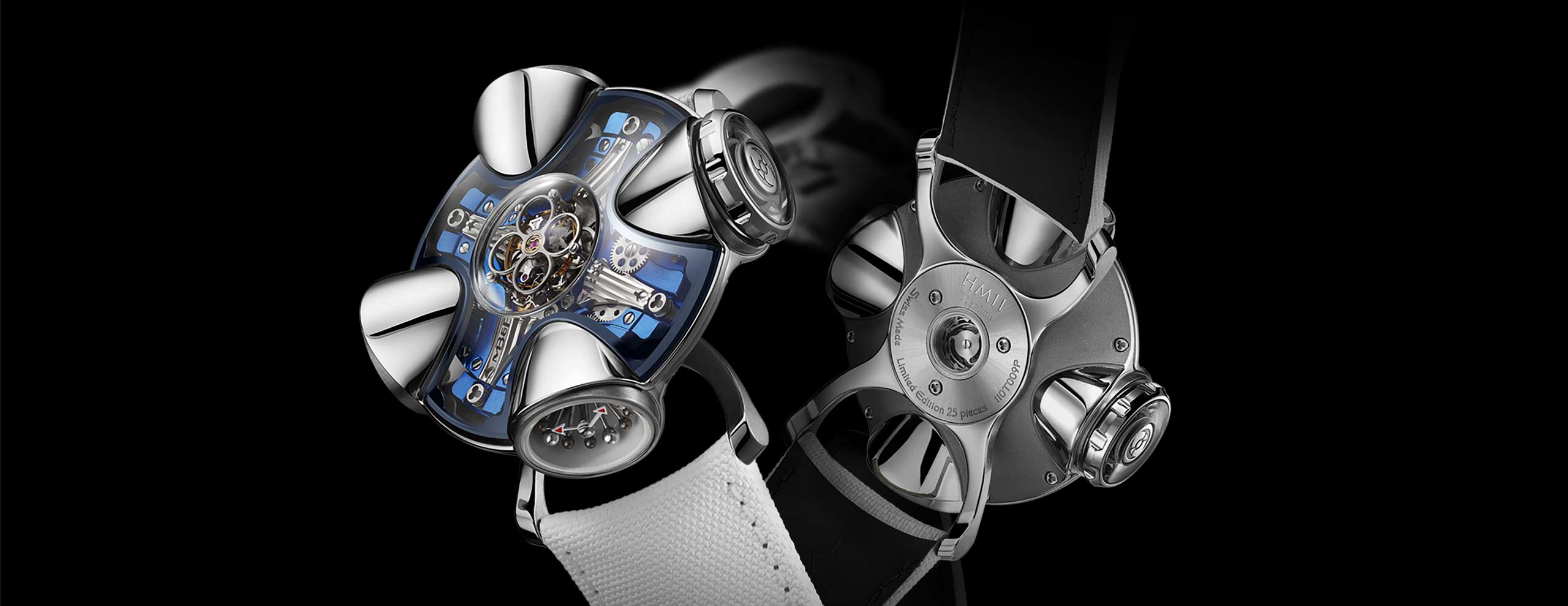News
Introducing the Brand New MB&F HM11 Architect with a Revolving Case
News
Introducing the Brand New MB&F HM11 Architect with a Revolving Case
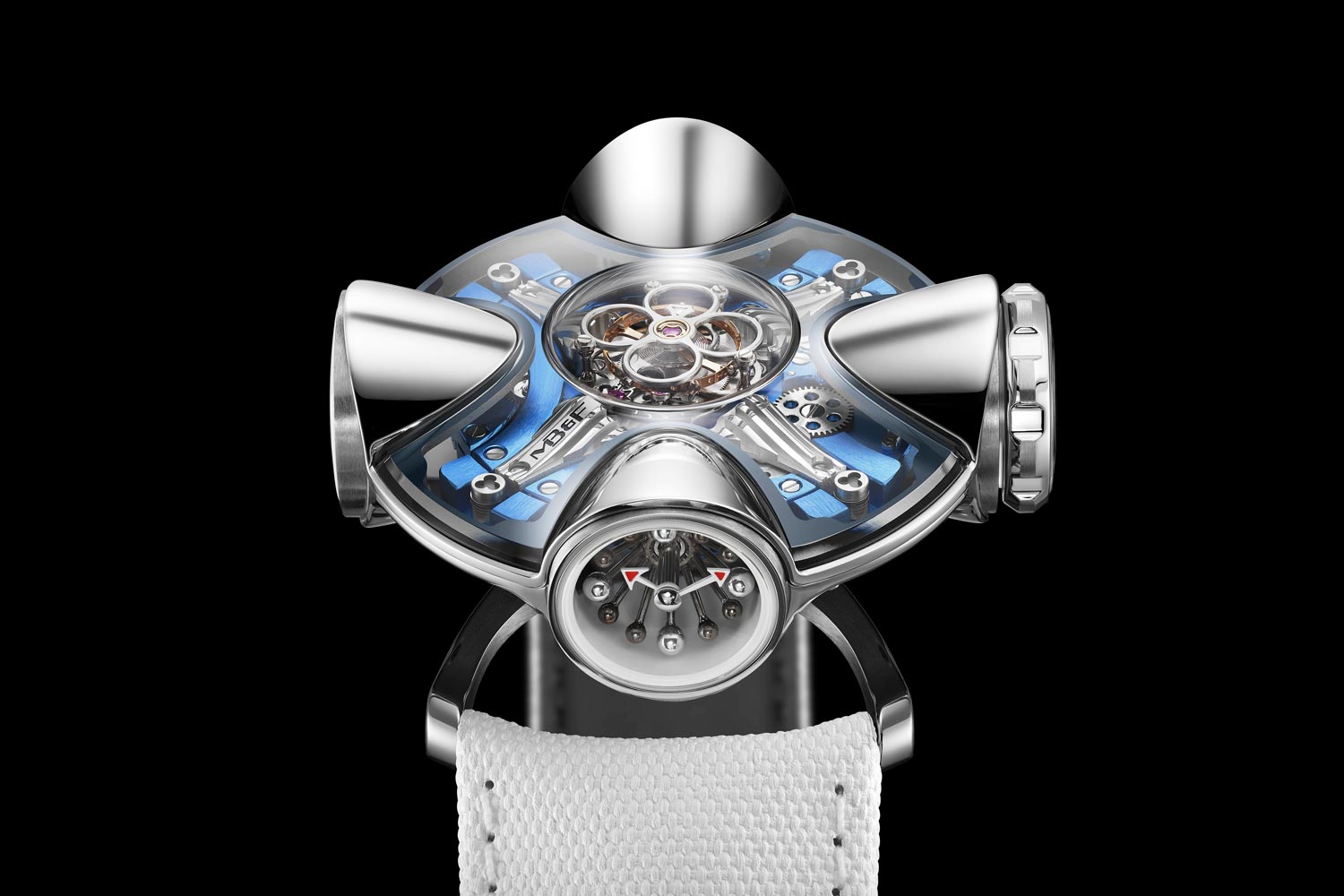
The all-new HM11 Architect in blue
A house made of machines
This is evident in the HM11 Architect, as it boasts an impressive case and display that once again proves that watches can be incredibly creative like a futuristic machine. The case is built on the concept of a house, with four symmetrical rooms and a domed roof in the guise of a sapphire crystal.
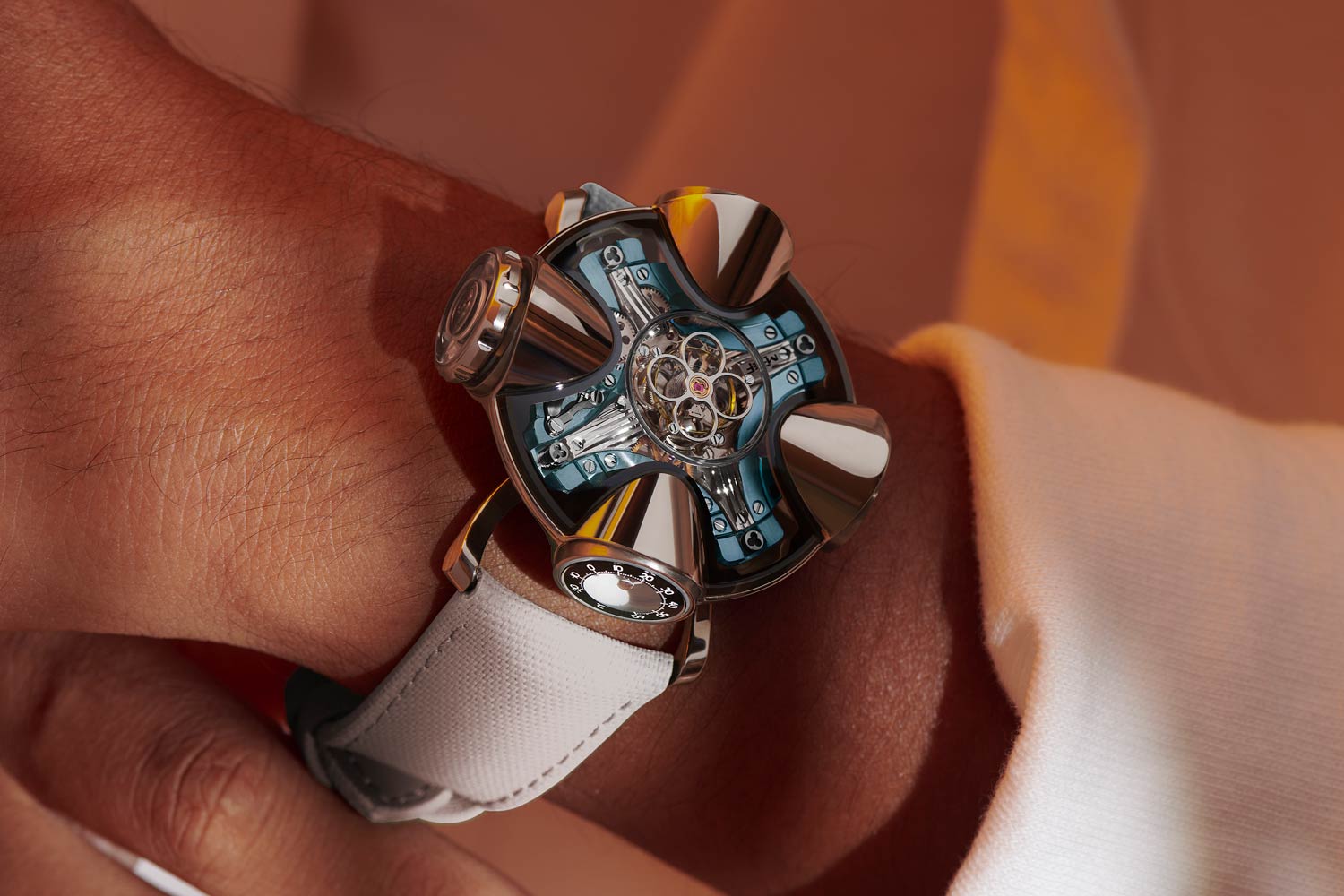
Ozone blue or solar red gold
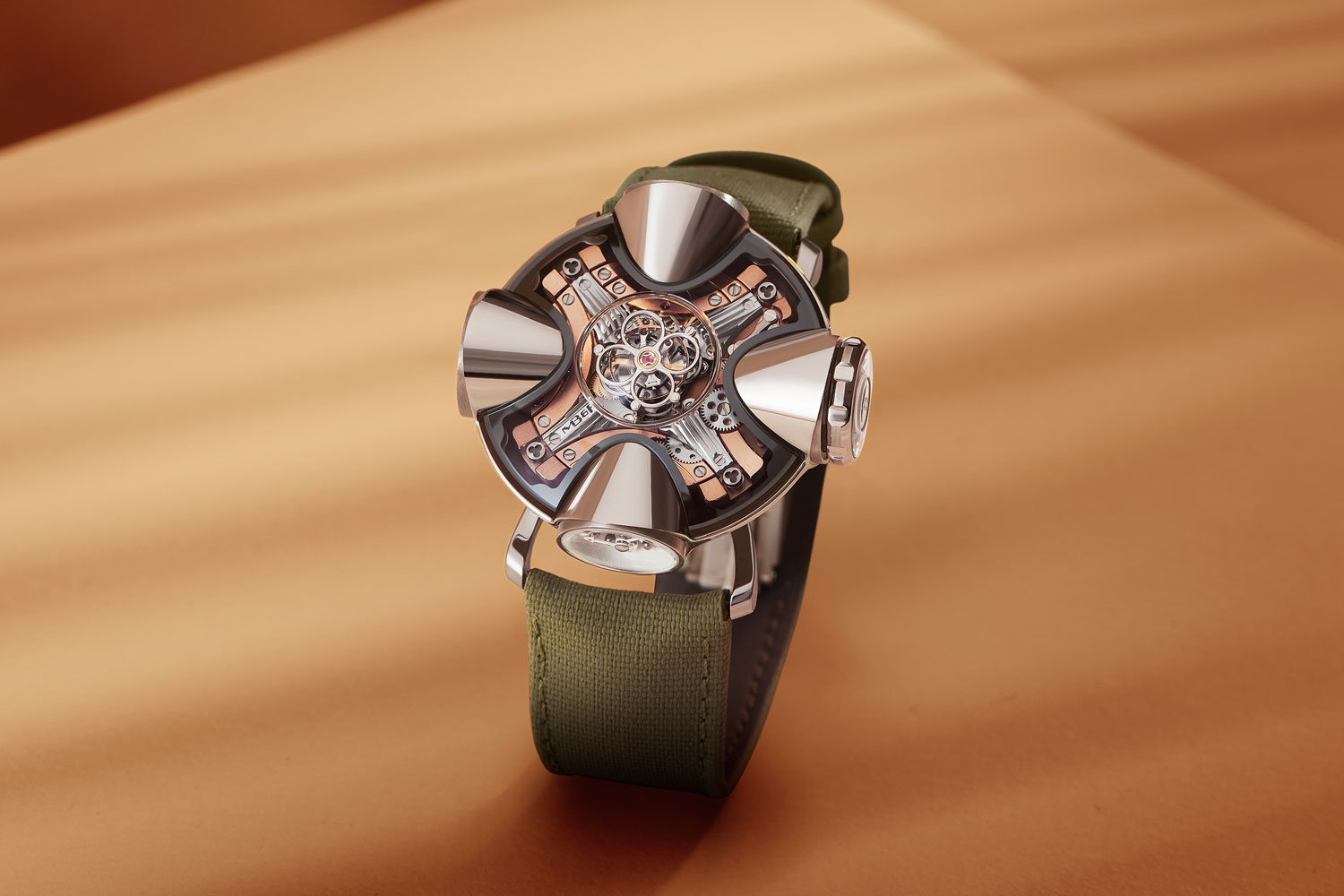
The HM11 Architect with a "red gold" dial
Vertical displays
Delving into the nuances of the movement, both the barrel and tourbillon take center stage. Notably, the displays deviate from the conventional dial arrangement. They undergo a transformation from horizontal to vertical positioning, nestled within the peripheral “rooms”.
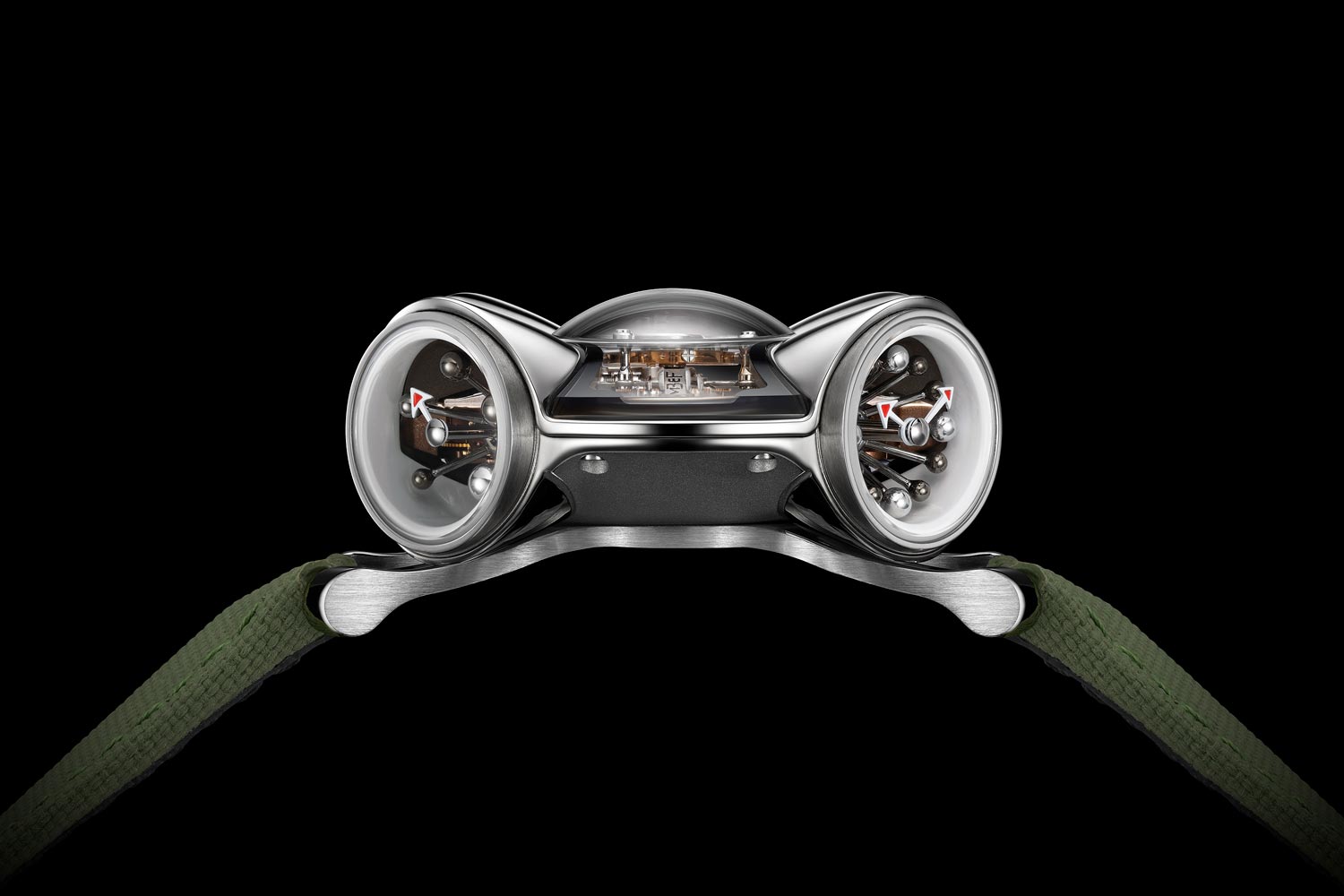
The power reserve indicator (left) and hours and minutes
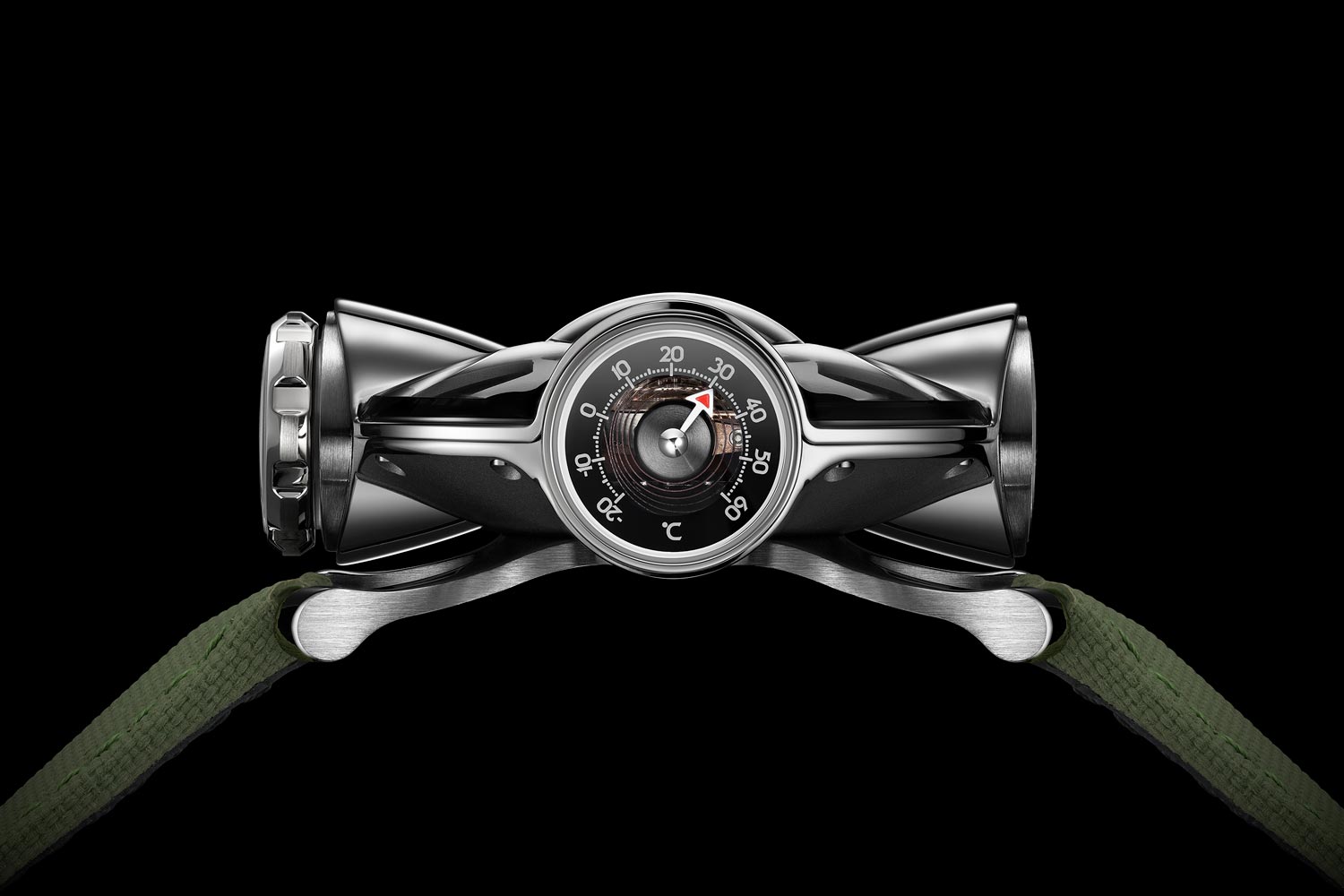
The thermometer with the bimetallic coil visible in the background
The display at 12 o’clock is a thermometer based on an old-school bimetallic strip, with a temperature range spanning from -20 to +60 degrees Celsius. The thermometer is a cool-looking display thanks to the strip visible in the background, but it is a standalone piece and not part of the movement. While some might view it as an afterthought, filling an otherwise empty space, it undoubtedly completes the watch’s overall design.
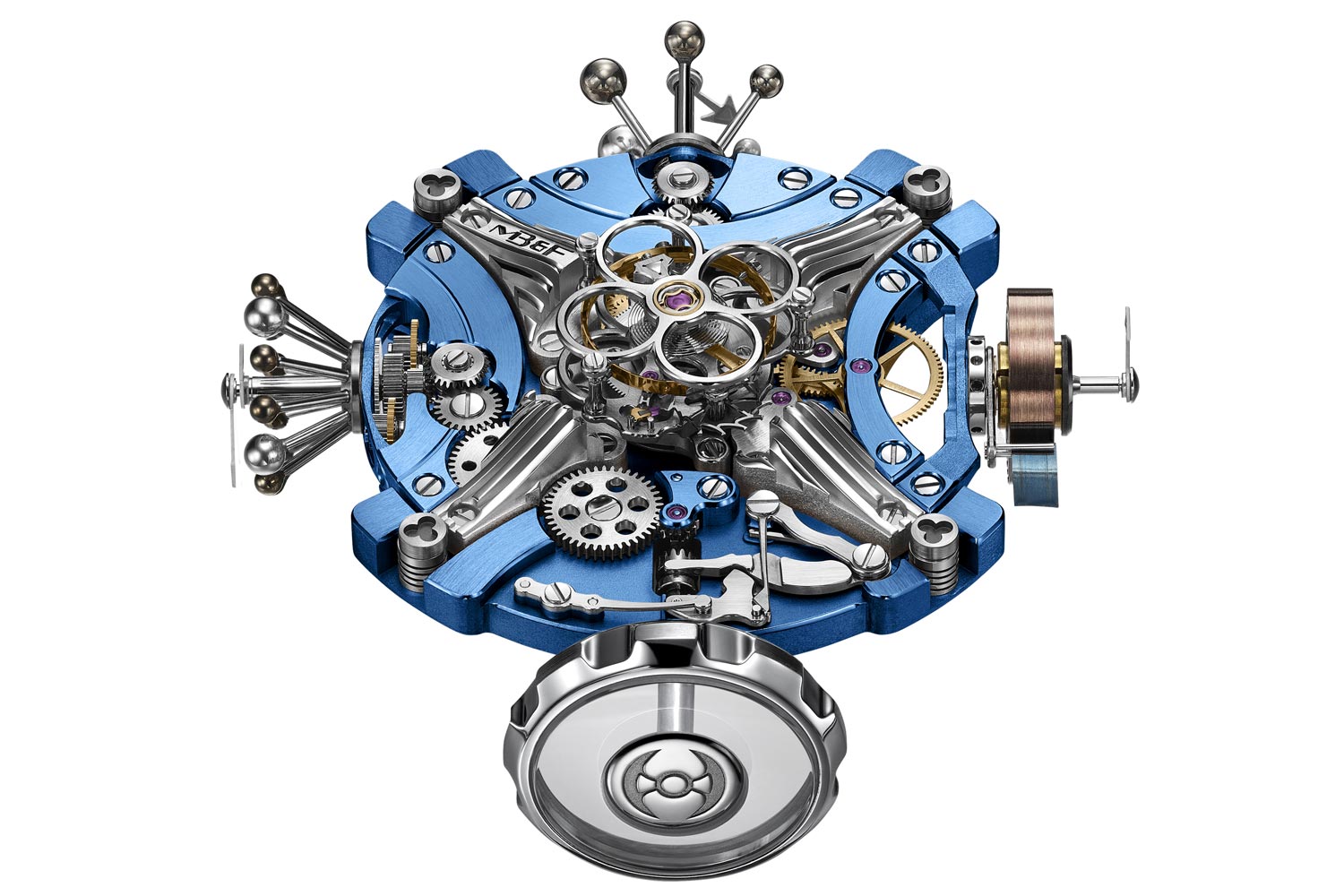
Note the thermometer at three o'clock is not mechanically coupled with the movement
The incorporation of central hand-winding is a clever idea for two reasons: first, the user will have to rotate the case to look at the vertical displays on different sides, and in the process of doing so, it could double up and wind up the movement. The second reason is that winding up using the case is more practical than using a crown, because it’s easier to grip and rotate.
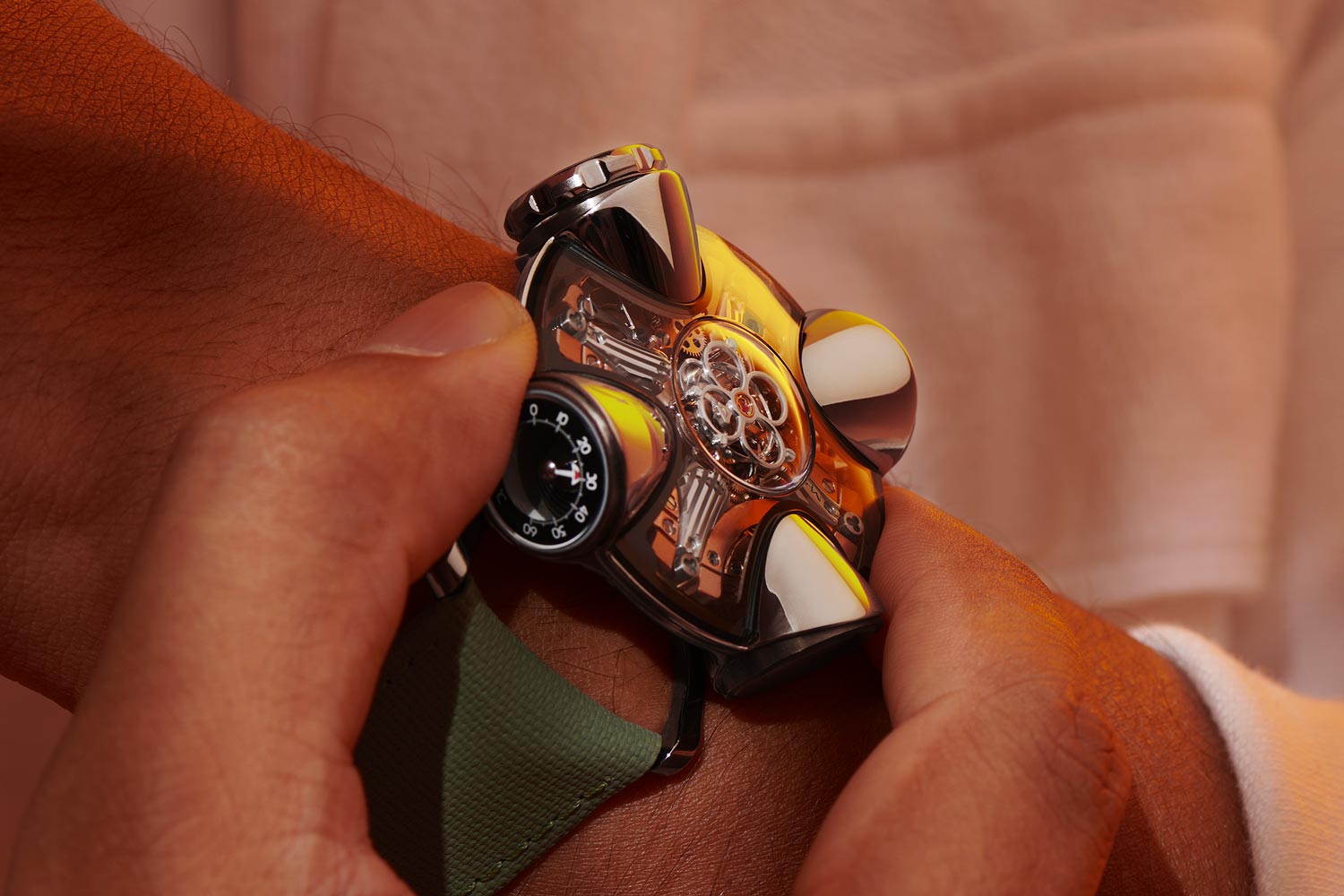
Rotating the case allows the user to view different dials as well as wind up the barrel
MB&F HM11 Architect specs
Functions: Hours, minutes, power reserve indicator, and thermometer
Case: 42 mm x 23 mm; titanium; water resistant to 20 m
Strap: White rubber strap for the blue model and green rubber strap for the “red gold” model
Limited edition: 25 pieces in each colour




